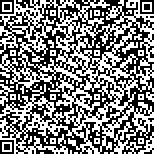| 引用本文: | 李艳梅, 隋晓琳, 薛瑞娟, 李 悦, 罗 燕, 李爱荣.蔗糖对列当科两种根部半寄生植物吸器发生的促进作用[J].广西植物,2022,42(5):811-819.[点击复制] |
| LI Yanmei, SUI Xiaolin, XUE Ruijuan, LI Yue, LUO Yan, LI Airong.Enhancement effects of sucrose on haustorium formation in two root hemiparasitic species of Orobanchaceae[J].Guihaia,2022,42(5):811-819.[点击复制] |
|
| |
|
|
| 本文已被:浏览 6670次 下载 1655次 |

码上扫一扫! |
|
|
| 蔗糖对列当科两种根部半寄生植物吸器发生的促进作用 |
|
李艳梅1,2, 隋晓琳1, 薛瑞娟1, 李 悦1,2, 罗 燕1,2, 李爱荣1*
|
|
1. 云南省野生资源植物研发重点实验室, 中国科学院昆明植物研究所, 昆明 650201;2. 中国科学院大学, 北京 100049
|
|
| 摘要: |
| 吸器是寄生植物的特征器官,研究影响其发生的因素,有助于了解寄生关系的建立和调控过程。该研究以两种列当科(Orobanchaceae)根部半寄生植物甘肃马先蒿(Pedicularis kansuensis)和松蒿(Phtheirospermum japonicum)为材料,通过皿内培养试验,分析了蔗糖、DMBQ(2,6-二甲氧基-对-苯醌,一种高效的列当科根部半寄生植物吸器诱导化合物)和寄主植物诱导下两种根部半寄生植物吸器发生情况。结果表明:(1)蔗糖显著促进两种根部半寄生植物吸器发生,无寄主存在时,2%蔗糖处理使甘肃马先蒿和松蒿吸器发生率分别提高39.9%和20.2%。(2)蔗糖明显提升寄主植物对两种根部半寄生植物的吸器诱导水平,添加蔗糖后,寄主诱导的甘肃马先蒿单株吸器数和具木质桥的吸器比例分别增加5.7个/株和17.9%,松蒿吸器发生率和具木质桥的吸器比例分别提升76.7%和16.2%。(3)蔗糖对松蒿吸器发生的促进作用与已知吸器诱导化合物DMBQ相当,均能诱导50%以上的植株产生吸器。(4)培养基中添加4%蔗糖对两种根部半寄生植物的吸器诱导效果最好,其中甘肃马先蒿吸器发生率为56%、松蒿为37.9%。综上认为,蔗糖对两种根部半寄生植物吸器发生和分化均有明显的促进作用。 |
| 关键词: 甘肃马先蒿, 松蒿, 2,6-二甲氧基-对-苯醌, 吸器发生, 蔗糖浓度 |
| DOI:10.11931/guihaia.gxzw202003039 |
| 分类号:Q945.4 |
| 文章编号:1000-3142(2022)05-0811-09 |
| 基金项目:国家自然科学基金(31971536, 31872686); 中国科学院青年创新促进会优秀会员项目(2011276); 云南省万人计划青年拔尖人才项目(YNWR-QNBJ-2018-092)[Supported by National Natural Science Foundation of China(31971536, 31872686); Youth Innovation Promotion Association of Chinese Academy of Sciences(2011276); Young and Elite Talents Project of Yunnan Ten Thousand Plan(YNWR-QNBJ-2018-092)]。 |
|
| Enhancement effects of sucrose on haustorium formation in two root hemiparasitic species of Orobanchaceae |
|
LI Yanmei1,2, SUI Xiaolin1, XUE Ruijuan1, LI Yue1,2, LUO Yan1,2, LI Airong1*
|
|
1. Yunnan Key Laboratory for Wild Plant Resources, Department of Economic Plants and Biotechnology, Kunming Institutes of Botany,
Chinese Academy of Sciences, Kunming 650201, China;2. University of Chinese Academy of Sciences, Beijing 100049, China
1. Yunnan Key Laboratory for Wild Plant Resources, Department of Economic Plants and Biotechnology, Kunming Institutes of Botany,
Chinese Academy of Sciences, Kunming 650201, China; 2. University of Chinese Academy of Sciences, Beijing 100049, China
|
| Abstract: |
| Haustoria are characteristic organs of parasitic plants. That a better knowledge of factors influencing haustorium formation is essential to understand the establishment and regulation of parasitic relationship. Pedicularis kansuensis and Phtheirospermum japonicum, two hemiparasitic species from the family Orobanchaceae, were used as research objects. Agar culture experiments were conducted to investigate the effects of sucrose, DMBQ(2,6-dimethoxy-p-benzoquinone, an effective haustorium-inducing factor for root hemiparasitic Orobanchaceae species)and host plants on haustorium formation. The results were as follows:(1)Sucrose significantly promoted haustorium formation. Amendment with 2% sucrose increased the percentage of plants with haustoria in Pedicularis kansuensis and Phtheirospermum japonicum by 39.9% and 20.2% in the absence of host plants.(2)Sucrose enhanced haustorium-inducing activity of host plants. The number of haustoria per plant and ratio of haustoria with xylem bridges induced by host plants increased by 5.7 and 17.9% in Pedicularis kansuensis, and percentage of plants with haustoria and ratio of haustoria with xylem bridges increased by 76.7% and 16.2% in Phtheirospermum japonicum.(3)The promoting effect of sucrose on haustorium formation was of a similar magnitude as DMBQ for Phtheirospermum japonicum, with over 50% plants formed haustoria in both treatments.(4)Four percent was the optimal sucrose concentration for haustorium formation of two root hemiparasitic species, leading to the highest percentage of plants with haustoria(56% for Pedicularis kansuensis and 37.9% for Phtheirospermum japonicum). All the above results indicate that sucrose has significant promoting effects on both haustorium initiation and differentiation of the tested hemiparasitic species. |
| Key words: Pedicularis kansuensis, Phtheirospermum japonicum, 2,6-dimethoxy-p-benzoquinone(DMBQ), haustorium formation, sucrose concentration |
|
|
|
|
|